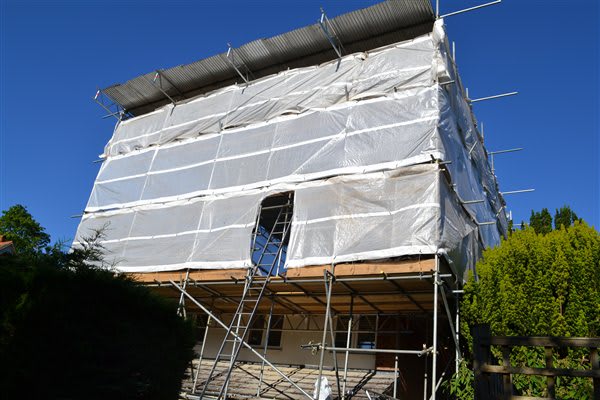Hello,
I am working on the structural/architectural rehabilitation of an 80 year old 30'x60' building. CMU walls, and steel joists (from the 1930s) with some type of built-up roofing system that bears on the joists.
The roof is intended to be replaced. So, a full demo of the built-up roof, the steel joists, and other associated elements. They will need to fully-grout all non-grouted cells, and provide additional wall reinforcement too. As a result, the wall may also need to be partially demo'd for them to access open cells from the top.
The client needs to maintain Operations inside this structure. My question is, is it an established practice to continue Operations inside a structure if the roof/walls are being demo'd? Is there any temporary construction (I am thinking some type of metal "container" on the inside of the building that protects the workers while the work overhead happens. I know it sounds silly from a life safety standpoint, but I just want to know what options I have. We would need to ensure that the building is operable, weatherproof, and watertight, as demo goes on.
Thanks for your time.
I am working on the structural/architectural rehabilitation of an 80 year old 30'x60' building. CMU walls, and steel joists (from the 1930s) with some type of built-up roofing system that bears on the joists.
The roof is intended to be replaced. So, a full demo of the built-up roof, the steel joists, and other associated elements. They will need to fully-grout all non-grouted cells, and provide additional wall reinforcement too. As a result, the wall may also need to be partially demo'd for them to access open cells from the top.
The client needs to maintain Operations inside this structure. My question is, is it an established practice to continue Operations inside a structure if the roof/walls are being demo'd? Is there any temporary construction (I am thinking some type of metal "container" on the inside of the building that protects the workers while the work overhead happens. I know it sounds silly from a life safety standpoint, but I just want to know what options I have. We would need to ensure that the building is operable, weatherproof, and watertight, as demo goes on.
Thanks for your time.

